Earth formed 4.54 billion years ago. The first period of the history of the Earth was known as the Hadean Period which lasted from 4.54 billion to 4 billion years ago. During that time, Earth was thought to be a magma filled, volcanic hellscape. It all sounds rather inhospitable at this stage but even then, liquid oceans of water are thought to have existed under an atmosphere of carbon dioxide and nitrogen. Recent research has shown that this environment may well have been rather more habitable than once thought.
Continue reading “The Early Earth Wasn’t Completely Terrible”How Did Life Get Started on Earth? Atmospheric Haze Might Have Been the Key
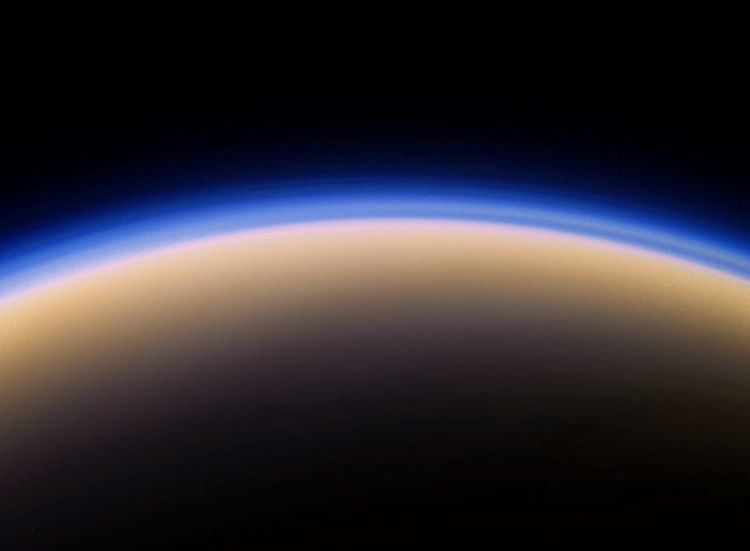
A recent study accepted to The Planetary Science Journal investigates how the organic hazes that existed on Earth between the planet’s initial formation and 500 million years afterwards, also known as Hadean geologic eon, could have contained the necessary building blocks for life, including nucleobases and amino acids. This study holds the potential to not only help scientists better understand the conditions on an early Earth, but also if these same conditions on Saturn’s largest moon, Titan, could produce the building blocks of life, as well.
Continue reading “How Did Life Get Started on Earth? Atmospheric Haze Might Have Been the Key”There’s a Vast Microbial Ecosystem Underneath the Crater that Wiped Out the Dinosaurs

How did life arise on Earth? How did it survive the Hadean eon, a time when repeated massive impacts excavated craters thousands of kilometres in diameter into the Earth’s surface? Those impacts turned the Earth into a hellish place, where the oceans turned to steam, and the atmosphere was filled with rock vapour. How could any living thing have survived?
Ironically, those same devastating impacts may have created a vast subterranean haven for Earth’s early life. Down amongst all those chambers and pathways, pumped full of mineral-rich water, primitive life found the shelter and the energy needed to keep life on Earth going. And the evidence comes from the most well-known extinction event on Earth: the Chicxulub impact event.
Continue reading “There’s a Vast Microbial Ecosystem Underneath the Crater that Wiped Out the Dinosaurs”All Life on Earth is Made up of the Same 20 Amino Acids. Scientist Now Think They Know Why
The question of how life on Earth first emerged is one that humans have been asking themselves since time immemorial. While scientists are relatively confident about when it happened, there has been no definitive answer as to why it did. How did amino acids, the chemical building blocks of life, come together roughly four billion years ago to create the first protein molecules?
While that question is still unanswered, scientists are making new discoveries that could help narrow it down. For instance, a team of researchers from the Georgia Institute of Technology’s Center for Chemical Evolution (CCT) recently conducted a study that showed how some of the earliest predecessors of the protein molecule may have spontaneously linked up to form a chain.
Continue reading “All Life on Earth is Made up of the Same 20 Amino Acids. Scientist Now Think They Know Why”One of the Oldest Earth Rocks Turned up on the Moon, of all Places
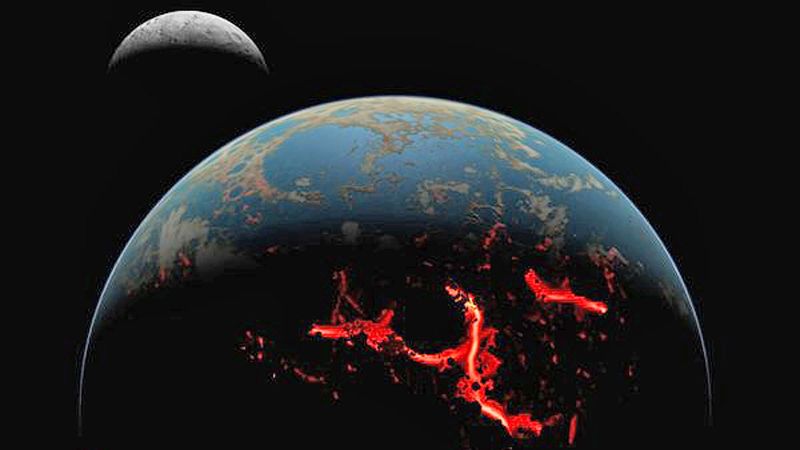
According the Giant Impact Hypothesis, the Earth-Moon system was created roughly 4.5 billion years ago when a Mars-sized object collided with Earth. This impact led to the release of massive amounts of material that eventually coalesced to form the Earth and Moon. Over time, the Moon gradually migrated away from Earth and assumed its current orbit.
Since then, there have been regular exchanges between the Earth and the Moon due to impacts on their surfaces. According to a recent study, an impact that took place during the Hadean Eon (roughly 4 billion years ago) may have been responsible for sending the Earth’s oldest sample of rock to the Moon, where it was retrieved by the Apollo 14 astronauts.
Continue reading “One of the Oldest Earth Rocks Turned up on the Moon, of all Places”Early Earth Was Almost Entirely Underwater, With Just A Few Islands

It might seem unlikely, but tiny grains of minerals can help tell the story of early Earth. And researchers studying those grains say that 4.4 billion years ago, Earth was a barren, mountainless place, and almost everything was under water. Only a handful of islands poked above the surface.
Continue reading “Early Earth Was Almost Entirely Underwater, With Just A Few Islands”
Newly Found Ancient Fossils Show Possibilities For Finding Martian Life
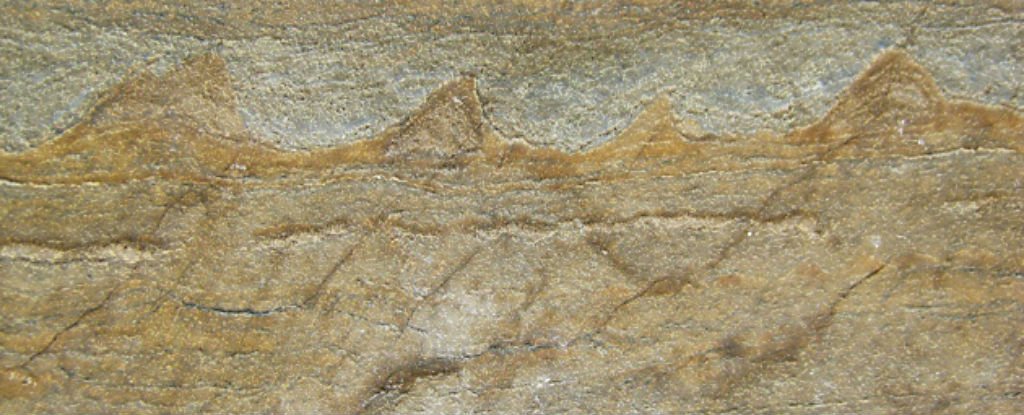
Fossilized remains are a fascinating thing. For paleontologists, these natural relics offer a glimpse into the past and a chance to understand what kind of lifeforms lurked there. But for astronomers, fossils are a way of ascertaining precisely when it was that life first began here on our planet – and perhaps even the Solar System.
And thanks to a team of Australian scientists, the oldest fossils to date have been uncovered. These fossilized remains have been dated to 3.7 billion years of age, and were of a community of microbes that lived on the ancient seafloor. In addition to making scientists reevaluate their theories of when life emerged on Earth, they could also tell us if there was ancient life on Mars.
The fossil find was made in what is known as the Isua Supracrustal Belt (ISB), an area in southwest Greenland that recently became accessible due to the ice melting in the area. According to the team, these fossils – basically tiny humps in rock measuring between one and four centimeters (0.4 and 1.6 inches) tall – are stromatolites, which are layers of sediment packed together by ancient, water-based bacterial colonies.
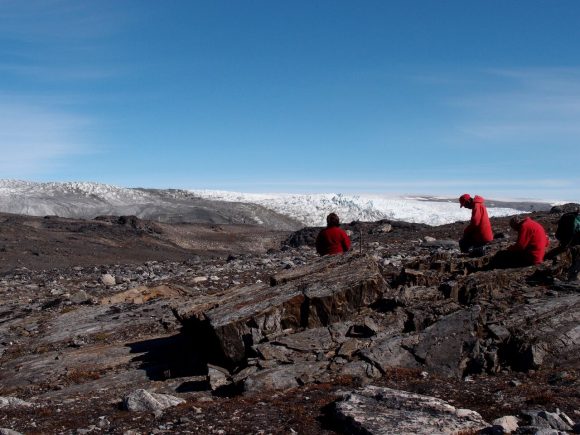
According to the team’s research paper, which appeared recently in Nature Communications, the fossilized microbes grew in a shallow marine environment, which is indicated by the seawater-like rare-earth elements and samples of sedimentary rock that were found with them.
They are also similar to colonies of microbes that can be found today, in shallow salt-water environments ranging from Bermuda to Australia. But of course, what makes this find especially interesting is just how old it is. Basically, the stone in the ISB is dated back to the early Archean Era, which took place between 4 and 3.6 billion years ago.
Based on their isotopic signatures, the team dated the fossils to 3.7 billion years of age, which makes them 220 million years older than remains that had been previously uncovered in the Pilbara Craton in north-western Australia. At the time of their discovery, those remains were widely believed to be the earliest fossil evidence of life on Earth.
As such, scientists are now reconsidering their estimates on when microbial life first emerged on planet Earth. Prior to this discovery, it was believed that Earth was a hellish environment 3.7 billion years ago. This was roughly 300 million years after the planet had finished cooling, and scientists believed it would take at least half a billion years for life to form after this point.
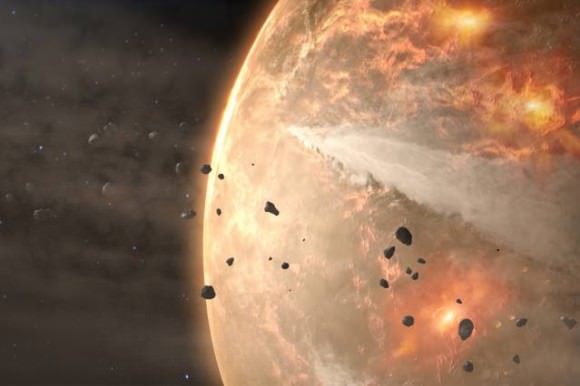
But with this new evidence, it now appears that life could have emerged faster than that. As Allen P. Nutman – a professor from the University of Wallongong, Australia, and the study’s lead author – said in a university press release:
“The significance of stromatolites is that not only do they provide obvious evidence of ancient life that is visible with the naked eye, but that they are complex ecosystems. This indicates that as long as 3.7 billion years ago microbial life was already diverse. This diversity shows that life emerged within the first few hundred millions years of Earth’s existence, which is in keeping with biologists’ calculations showing the great antiquity of life’s genetic code.”
When life emerged is a major factor when it comes to Earth’s chemical cycles. Essentially, Earth’s atmosphere during the Hadean was believed to be composed of heavy concentrations of CO² atmosphere, hydrogen and water vapor, which would be toxic to most life forms today. During the following Archean era, this primordial atmosphere slowly began to be converted into a breathable mix of oxygen and nitrogen, and the protective ozone layer was formed.
The emergence of microbial life played a tremendous role in this transformation, allowing for the sequestration of CO² and the creation of oxygen gas through photosynthesis. Therefore, when it comes to Earth’s evolution, the question of when life arose and began to affect the chemical cycles of the planet has always been paramount.
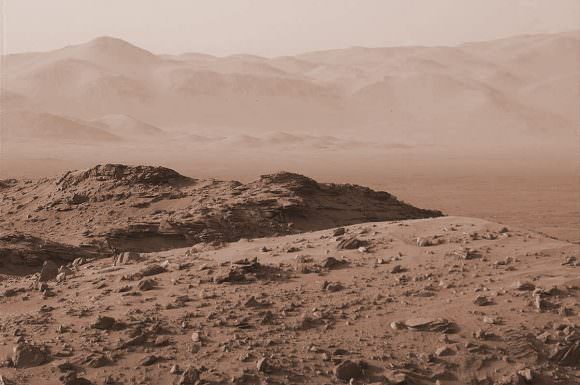
“This discovery turns the study of planetary habitability on its head,” said associate Professor Bennett, one of the study’s co-authors. “Rather than speculating about potential early environments, for the first time we have rocks that we know record the conditions and environments that sustained early life. Our research will provide new insights into chemical cycles and rock-water-microbe interactions on a young planet.”
The find has also inspired some to speculation that similar life structures could be found on Mars. Thanks to the ongoing efforts of Martian rovers, landers and orbiters, scientists now know with a fair degree of certainty that roughly 3.7 billion years ago, Mars had a warmer, wetter environment.
As a result, it is possible that life on Mars had enough time to form before its atmosphere was stripped away and the waters in which the microbe would have emerged dried up. As Professor Martin Van Kranendonk, the Director of the Australian Centre for Astrobiology at UNSW and a co-author on the paper, explained:
“The structures and geochemistry from newly exposed outcrops in Greenland display all of the features used in younger rocks to argue for a biological origin. This discovery represents a new benchmark for the oldest preserved evidence of life on Earth. It points to a rapid emergence of life on Earth and supports the search for life in similarly ancient rocks on Mars.”
Another thing to keep in mind is that compared to Earth, Mars experiences far less movement in its crust. As such, any microbial life that existed on Mars roughly 3.7 billion years ago would likely be easier to find.
This is certainly good news for NASA, since one of the main objectives of their Mars 2020 rover is to find evidence of past microbial life. I for one am looking forward to seeing what it leaves for us to pickup in its cache of sample tubes!
Further Reading: Nature Communications
Solar System History: How Was the Earth Formed?
Just how did the Earth — our home and the place where life as we know it evolved — come to be created in the first place? In some fiery furnace atop a great mountain? On some divine forge with the hammer of the gods shaping it out of pure ether? How about from a great ocean known as Chaos, where something was created out of nothing and then filled with all living creatures?
If any of those accounts sound familiar, they are some of the ancient legends that have been handed down through the years that attempt to describe how our world came to be. And interestingly enough, some of these ancient creation stories contain an element of scientific fact to them.
Continue reading “Solar System History: How Was the Earth Formed?”
Earth May Have Lost Some Primoridial Atmosphere to Meteors

During the Hadean Eon, some 4.5 billion years ago, the world was a much different place than it is today. As the name Hades would suggest (Greek for “underworld”), it was a hellish period for Earth, marked by intense volcanism and intense meteoric impacts. It was also during this time that outgassing and volcanic activity produced the primordial atmosphere composed of carbon dioxide, hydrogen and water vapor.
Little of this primordial atmosphere remains, and geothermal evidence suggests that the Earth’s atmosphere may have been completely obliterated at least twice since its formation more than 4 billion years ago. Until recently, scientists were uncertain as to what could have caused this loss.
But a new study from MIT, Hebrew Univeristy, and Caltech indicates that the intense bombardment of meteorites in this period may have been responsible.
This meteoric bombardment would have taken place at around the same time that the Moon was formed. The intense bombardment of space rocks would have kicked up clouds of gas with enough force to permanent eject the atmosphere into space. Such impacts may have also blasted other planets, and even peeled away the atmospheres of Venus and Mars.
In fact, the researchers found that small planetesimals may be much more effective than large impactors – such as Theia, whose collision with Earth is believed to have formed the Moon – in driving atmospheric loss. Based on their calculations, it would take a giant impact to disperse most of the atmosphere; but taken together, many small impacts would have the same effect.
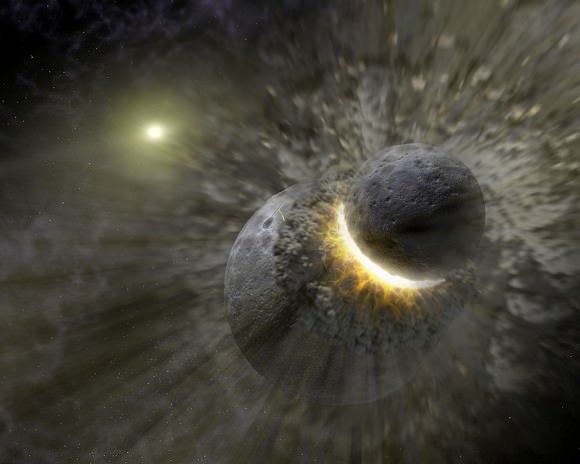
Hilke Schlichting, an assistant professor in MIT’s Department of Earth, Atmospheric and Planetary Sciences, says understanding the drivers of Earth’s ancient atmosphere may help scientists to identify the early planetary conditions that encouraged life to form.
“[This finding] sets a very different initial condition for what the early Earth’s atmosphere was most likely like,” Schlichting says. “It gives us a new starting point for trying to understand what was the composition of the atmosphere, and what were the conditions for developing life.”
What’s more, the group examined how much atmosphere was retained and lost following impacts with giant, Mars-sized and larger bodies and with smaller impactors measuring 25 kilometers or less.
What they found was that a collision with an impactor as massive as Mars would have the necessary effect of generating a massive a shockwave through the Earth’s interior and potentially ejecting a significant fraction of the planet’s atmosphere.
However, the researchers determined that such an impact was not likely to have occurred, since it would have turned Earth’s interior into a homogenous slurry. Given the appearance of diverse elements observed within the Earth’s interior, such an event does not appear to have happened in the past.
A series of smaller impactors, by contrast, would generate an explosion of sorts, releasing a plume of debris and gas. The largest of these impactors would be forceful enough to eject all gas from the atmosphere immediately above the impact zone. Only a fraction of this atmosphere would be lost following smaller impacts, but the team estimates that tens of thousands of small impactors could have pulled it off.

Such a scenario did likely occur 4.5 billion years ago during the Hadean Eon. This period was one of galactic chaos, as hundreds of thousands of space rocks whirled around the solar system and many are believed to have collided with Earth.
“For sure, we did have all these smaller impactors back then,” Schlichting says. “One small impact cannot get rid of most of the atmosphere, but collectively, they’re much more efficient than giant impacts, and could easily eject all the Earth’s atmosphere.”
However, Schlichting and her team realized that the sum effect of small impacts may be too efficient at driving atmospheric loss. Other scientists have measured the atmospheric composition of Earth compared with Venus and Mars; and compared to Venus, Earth’s noble gases have been depleted 100-fold. If these planets had been exposed to the same blitz of small impactors in their early history, then Venus would have no atmosphere today.
She and her colleagues went back over the small-impactor scenario to try and account for this difference in planetary atmospheres. Based on further calculations, the team identified an interesting effect: Once half a planet’s atmosphere has been lost, it becomes much easier for small impactors to eject the rest of the gas.
The researchers calculated that Venus’ atmosphere would only have to start out slightly more massive than Earth’s in order for small impactors to erode the first half of the Earth’s atmosphere, while keeping Venus’ intact. From that point, Schlichting describes the phenomenon as a “runaway process — once you manage to get rid of the first half, the second half is even easier.”
This gave rise to another important question: What eventually replaced Earth’s atmosphere? Upon further calculations, Schlichting and her team found the same impactors that ejected gas also may have introduced new gases, or volatiles.
“When an impact happens, it melts the planetesimal, and its volatiles can go into the atmosphere,” Schlichting says. “They not only can deplete, but replenish part of the atmosphere.”
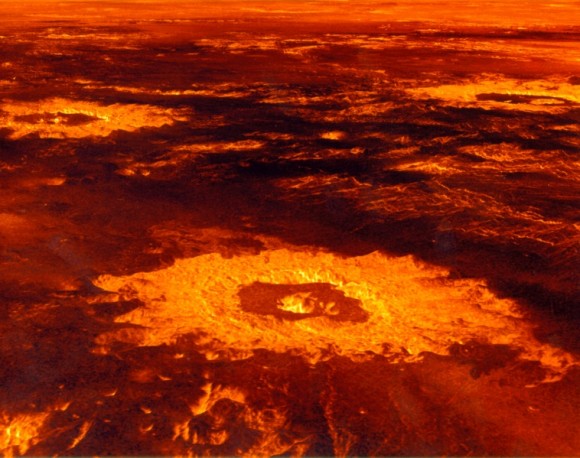
The group calculated the amount of volatiles that may be released by a rock of a given composition and mass, and found that a significant portion of the atmosphere may have been replenished by the impact of tens of thousands of space rocks.
“Our numbers are realistic, given what we know about the volatile content of the different rocks we have,” Schlichting notes.
Jay Melosh, a professor of earth, atmospheric, and planetary sciences at Purdue University, says Schlichting’s conclusion is a surprising one, as most scientists have assumed the Earth’s atmosphere was obliterated by a single, giant impact. Other theories, he says, invoke a strong flux of ultraviolet radiation from the sun, as well as an “unusually active solar wind.”
“How the Earth lost its primordial atmosphere has been a longstanding problem, and this paper goes a long way toward solving this enigma,” says Melosh, who did not contribute to the research. “Life got started on Earth about this time, and so answering the question about how the atmosphere was lost tells us about what might have kicked off the origin of life.”
Going forward, Schlichting hopes to examine more closely the conditions underlying Earth’s early formation, including the interplay between the release of volatiles from small impactors and from Earth’s ancient magma ocean.
“We want to connect these geophysical processes to determine what was the most likely composition of the atmosphere at time zero, when the Earth just formed, and hopefully identify conditions for the evolution of life,” Schlichting says.
Schlichting and her colleagues have published their results in the February edition of the journal Icarus.
Further Reading: MIT News



